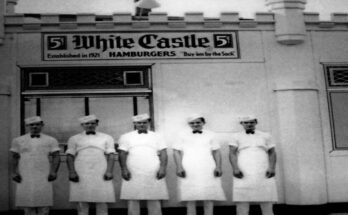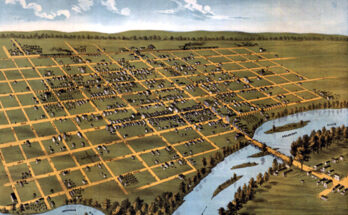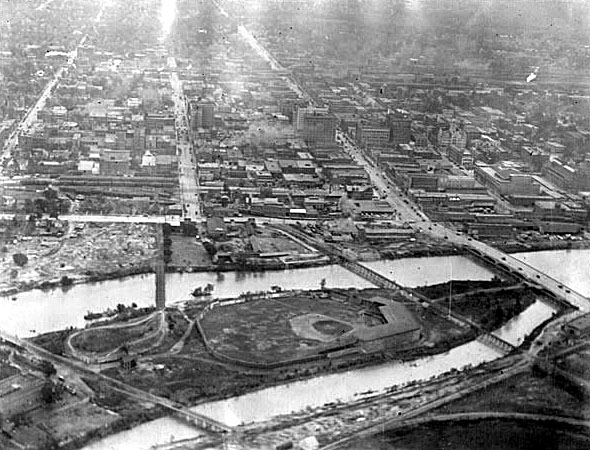
Enough time has passed since the closing of Joyland to see the maturation of a generation of young Wichitans who have neither fond memories of its creaky wooden “Queen of the Prairie” rollercoaster nor terrifying nightmares of Louie the Clown at the Wurlitzer Band Organ. But one must backtrack several additional generations to find among the living those who recall Wichita’s earlier amusement attraction, Wonderland Park.
In the 1870s, when Wichita was a freshly-chartered municipality, the Arkansas River began developing a massive sandbar that split it into two channels starting at its confluence with the Little Arkansas and tapering off right at the Douglas Avenue bridge. Over years this sandbar amassed itself into an island more than 50 acres in size. It was purchased in 1890 by local meatpacker Joseph Ackerman, who moved his family onto the island and ran a sand business there for 15 years before selling the property; forever after the whole of the massive bar would be known as Ackerman Island. And in 1905, with the construction of Wonderland Park, it would become the chief entertainment destination for Wichita and surrounding towns.
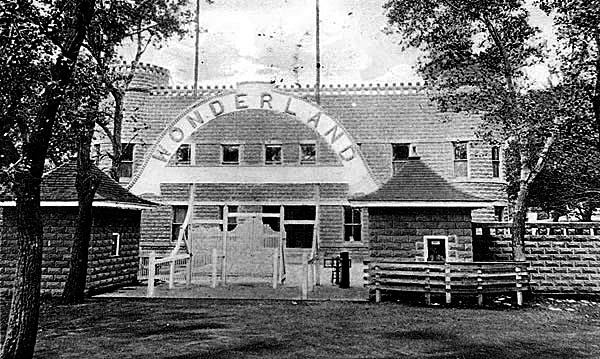
Wonderland’s buildings were comprised largely of concrete blocks made on-site using sand dredged from the river. Among them were the “coliseum” (a castle-turreted auditorium complete with a roller rink that doubled as a basketball court), a bandstand, a shooting gallery, a bowling alley, three theaters (including one that seated 1,100 patrons), a dancing pavilion, a fun house and numerous other structures. A small rollercoaster was built, then in 1911 replaced with a larger one called “The Giant Thriller;” this was reported to be the longest coaster in America at the time of its construction. A carousel was built, and an “electric fountain.” The grounds were decorated with statuary leftover from the dazzling 1904 World’s Fair in St. Louis. A baseball field was erected on the island just south of the park.
Access to the island, surrounded as it was on all sides by the Arkansas River, was made possible by foot (via a staircase descending from the Douglas Avenue Bridge), by horse or automobile (via two wooden trestle bridges) or by trolley (via a double-track spar off the Waco streetcar line). At the peak of Wonderland’s popularity, the trolleys ran as frequently as every three minutes, carrying up to 50 people per car.
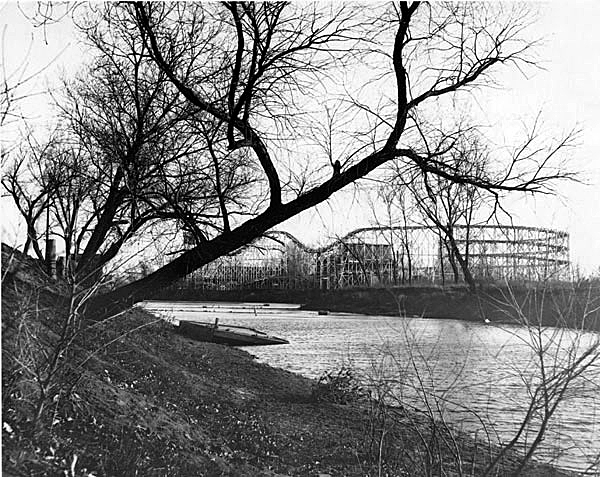
Wonderland’s attractions first opened to the public in late 1905, but the park’s grand opening celebration came the following April, and it quickly became a rousing success. On July 4, 1906, 12,000 people paid the 25¢ admission, and total attendance for the year topped 200,000 visitors— and this is when Wichita’s population was roughly 60,000. The theaters and bandstand drew big-name touring bands, comedy acts and lecturers to Wonderland Park; among the luminaries to appear there were the Marx Brothers, John Philip Sousa and baseball-star-turned-prohibitionist-preacher Billy Sunday.
In 1915 the newly-formed Wichita Aero Club hosted the National Balloon Race at the baseball park on the island, drawing national attention to Wichita and Wonderland; in that year the park set a new attendance record, with 16,600 paying guests visiting on the 5th of July.
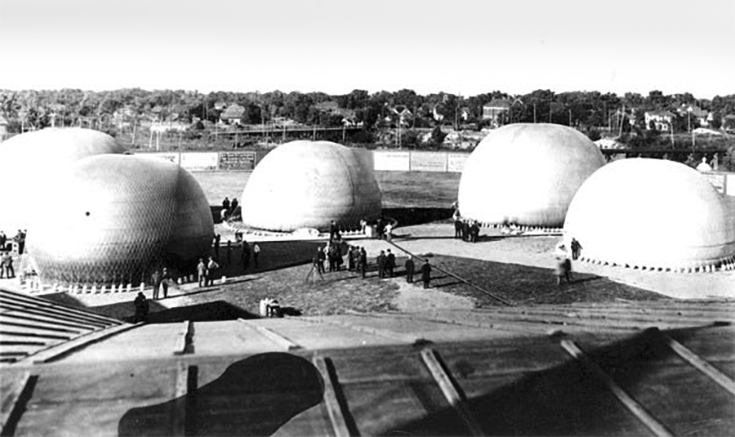
But times were changing. Temperance unions and various church and civic organizations led morality crusades with increasing volume and vigor, and in their wake were enacted scads of “blue laws” prohibiting all manner of “immoral” activity. In Wichita, this included the sale of tickets to theaters on Sundays. This struck the death knell for Wonderland’s profitability, as Sunday shows were among the park’s biggest draws. Wonderland’s management, unable to keep the business afloat, sold the island to a startup movie outfit, the Palestinian Film Company, for $40,000 in early 1918. That organization appears to have gone bust before setting up shop in Wichita, and by 1920 the property was being used by the Ark Valley Interurban Railroad (after which the Broadview Hotel’s AVI restaurant is named) to house its maintenance sheds.
In 1933, due to concerns about flooding, a plan was hatched to fill in the west river channel separating Ackerman Island from the mainland. The Works Progress Administration (WPA), a “New Deal” program designed to put unemployed Americans to work during the Depression, hired men to move the dirt from the island into the channel using picks, shovels and wheelbarrows. Their handiwork remains today in the landscape along the west bank of the river from the Indian Center all the way down to the Century II; if you visit Exploration Place, you are standing roughly on the old site of Wonderland Park.
The question today seems to be how long it will be before a generation matures that does not remember water flowing in the Arkansas River at all.
Wichitarchaeology is a series of Wichita history columns originally posted in F5 Weekly. These articles are being presented here as they originally appeared, in some cases with additional photos, supporting links and/or addenda providing updated information. All photographs courtesy of the Wichita-Sedgwick County Historical Museum. This post was first published 3/14/2013.


